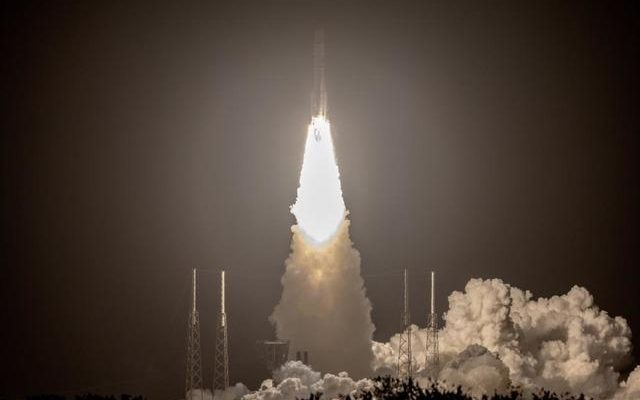The Vulcan Centaur rocket, carrying NASA’s Astrobotic Peregrine lander, which launched a new Moon mission, was launched today from Cape Canaveral Space Force Station in Florida. However, NASA’s vehicle, which sent the first Moon landing mission after 1972, experienced a technical problem. In the written statement made by the Astrobotic company behind the project, it was stated that after this morning’s launch, communication was established with Peregrine, all systems were turned on and started to work as designed.
It was stated that Astrobotic engineers are working to resolve the technical malfunction and an update will be provided when more information becomes available. Experts point out that it would not be possible for the Peregrine spacecraft to fulfill its mission without the ability to charge batteries with solar energy, and that it is not unusual for spacecraft to experience similar technical problems and that they should be prepared for them. It is stated that the Peregrine spacecraft is programmed to prioritize power to protect itself during technical disruptions and communication with the Earth.
THE JOURNEY IS PLANNED TO LAST 46 DAYS
The “Vulcan Centaur” rocket, carrying the Moon landing vehicle named “Peregrine” developed by the joint venture of Boeing and Lockheed Martin, “United Launch Alliance (ULA)”, was successfully launched from the Cape Canaveral Space Station in Florida this morning.

It was reported that “Peregrine” will land on the Moon after its journey, which is expected to last approximately 46 days, and will examine the Moon’s outer atmosphere, the soil in the landing area and the resources that could be used as fuel for 10 days.
ARTEMIS PROGRAM
In addition to crewed journeys within the framework of the “Artemis Program”, NASA also has comprehensive plans for the exploration of the Moon with the help of robots.
NASA will send vehicles to the Moon in 2024 as part of the “CLPS Program”, one of the main purposes of which is to investigate the possibilities of using resources on the Moon as fuel. (AA)

